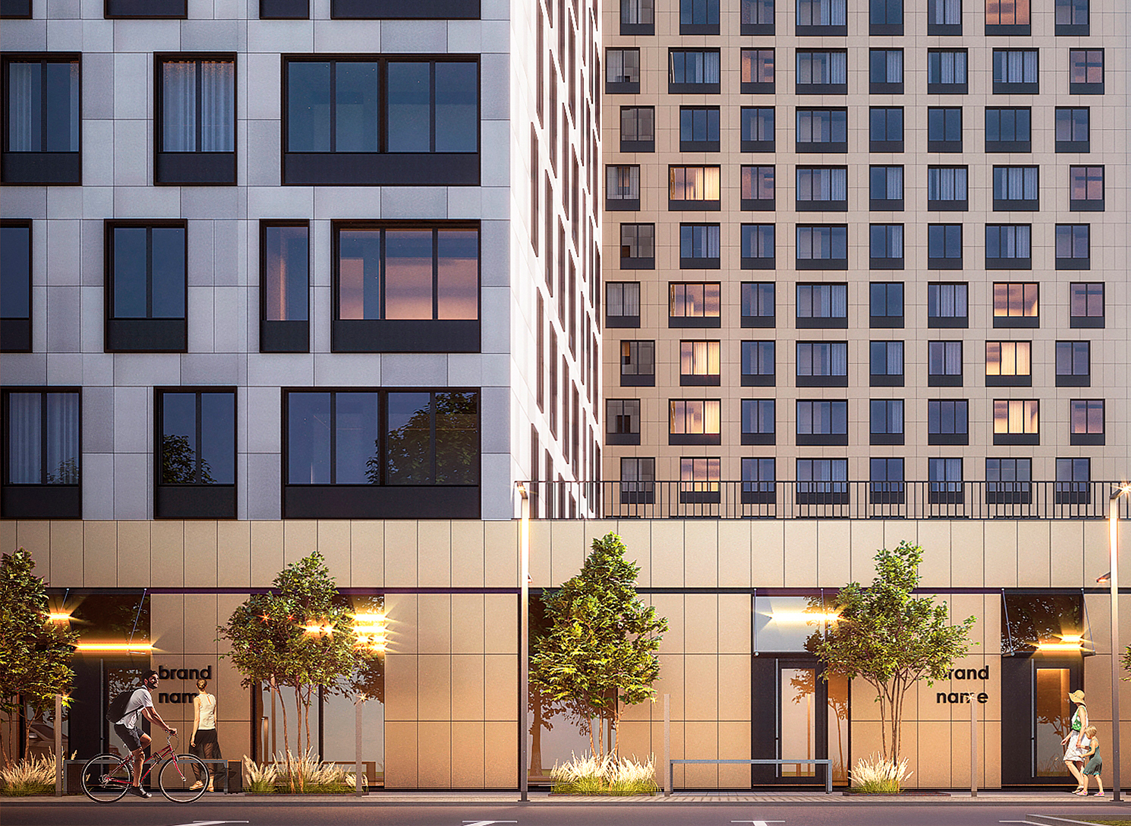Why do we use H2 staircases instead of H1 in our projects?
The presence of smoke-free stairs is a prerequisite for buildings higher than 28 meters. Smoke-free stairs are designed to serve as an emergency exit for people.
Ladder usage scenarios:
- In case of fire. The elevators will turn off and the only way for the residents of the house to get to the street is the stairs. It is made in such a way as to get on it quickly and without interference. The staircase is designed in such a way that it is protected from smoke and fire.
- Climb or descend on foot to the apartment.
- Bring bulky items that could not be lifted on the elevator.
Why do we consider the H1 staircase ineffective?
- Inconvenient passage. According to the norms, the ladder H1 should adjoin the outer wall. To get to the stairs, you need to go along a long corridor and go out to the balcony (it serves as a cut-off from fire and smoke in case of a fire on the floor), and only then we get to the stairs.
- Isolation. According to a number of requirements, the staircase has a fixed position, it is far from the apartment to go to it. For residents, such a staircase is not part of the house. Often such stairs are abandoned, they are rarely used, garbage accumulates.
- The cold ceiling of the balcony is in contact with the warm ceiling of the house – the structure of the house wears out faster.
- Low energy efficiency. The doors to the stairs allow heat to pass through, which causes heat loss.
- Not safe. Common partitions with balconies of apartments, through which thieves can climb.
- Morally obsolete. This type of staircase was used in the USSR when there were no technical capabilities and engineering solutions in terms of fire safety.
When using the H1 staircase in the project, the developer incurs financial losses – he takes part of the usable area from the house, on which apartments can be designed.
When designing Bureau Parametrica, it uses a non-smoke type 2 ladder or H2. Technologically better, more convenient and more profitable than H1.
In each smoke-free staircase, the problem of smoke removal must be solved. On type 1 stairs, an open balcony created a natural smoke and fire barrier to the stairs. Therefore, this ladder has a fixed position – at the outer wall. On stairs of type 2, thanks to the development of engineering technologies, the cut-off is a forced smoke exhaust system, which is hidden in the wall adjacent to the stairs. Therefore, the H2 staircase can be located anywhere in the house. The most advantageous position of the stairs in the center of the building, this provides a number of advantages:
- Convenient location and easy access. The position of the stairs allows quick access from all apartments, without long corridors and many doors.
- Safety and cleanliness. Since the staircase is not isolated from the rest of the house.
- Daily use by residents. As the stairs become more accessible and safer, occupants of floors 2-5 will be able to descend the stairs while reducing the load on the elevator.
How much can a developer save?
We were approached by a customer with a request to audit a typical project of a multi-storey building. The project used the ladder H1. More materials are spent on this type of stairs – balconies, extra doors, additional corridors, which leads to an increase in costs. 20 million rubles – the cost of the project will decrease by this amount if the H1 ladder is replaced by H2. Moreover, we calculated the lost profit if the H1 ladder is used instead of H2 – 28 million rubles. This is due to the elimination of unnecessary corridors, balconies and stairs and the addition of new sellable square meters.
